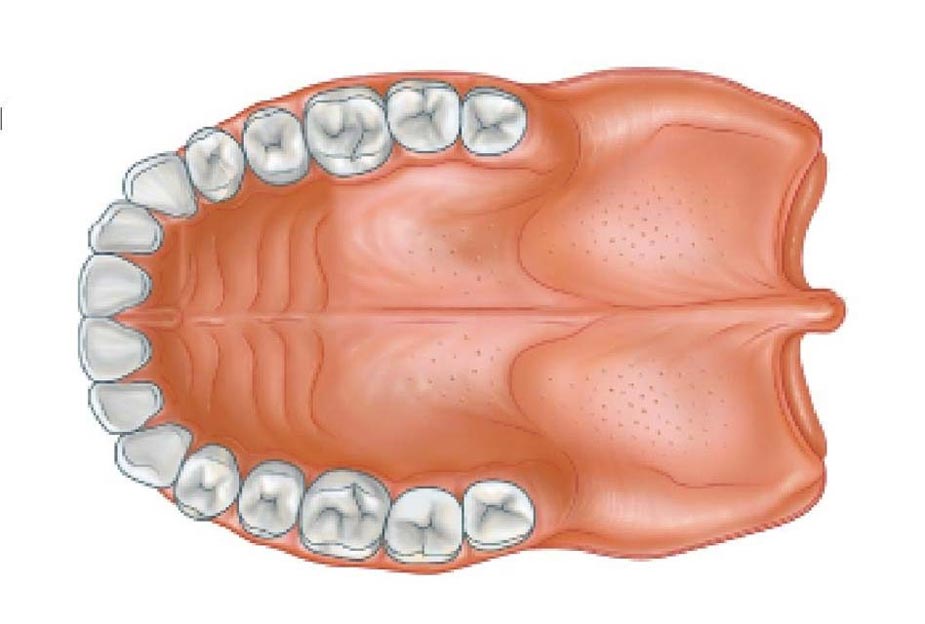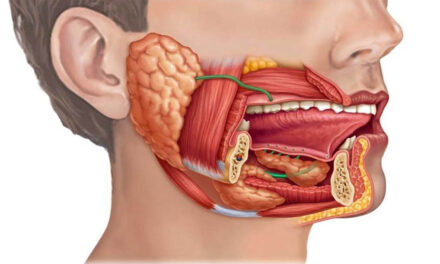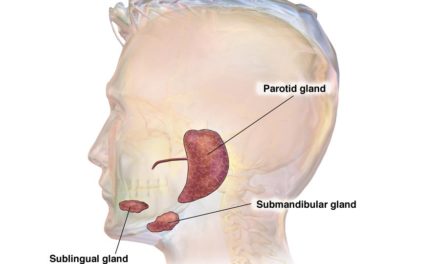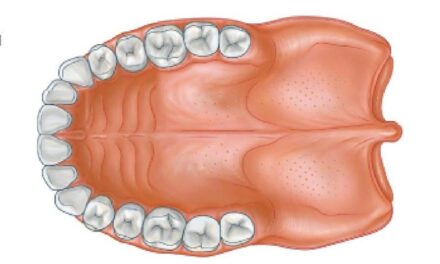The palate, also known the roof of the mouth, is considered to be an anatomical division that separates the oral cavity (mouth) and nasal cavities (nose). It is divided into two distinct parts : an anterior hard palate of bone and, a posterior soft palate that has no skeletal support and terminates in a fleshy, elongated projection called the uvula.
In other words, the hard palate is part of the oral cavity and the soft palate is part of the oropharynx (part of the pharynx behind the uvula, more precisely, from the uvula to the level of the hyoid bone).
If we look at the animal kingdom, first well-developed palates are found in the reptiles, although only in the form of a hard partition. Palates similar to those in humans occur only in birds and some mammals. In a few whales the mucous membrane forms toughened plates known as baleen, or whalebone.
Hard palate
The hard palate, which comprises two-thirds of the total palate area, forms the front part. It is a horizontal plate of bone covered by a moist, durable layer of mucous-membrane tissue, which secretes small amounts of mucus. This layer forms several ridges that help grip food while the tongue agitates it during chewing. The hard palate provides space for the tongue to move freely, and at the same time it offers a rigid floor to the nasal cavity so that pressures within the mouth do not close off the nasal passage.
The hard palate is therefore essential for eating. It’s also important for speech, especially for the pronunciation of the consonants such as “j”, “ch”, “d” and “t”.
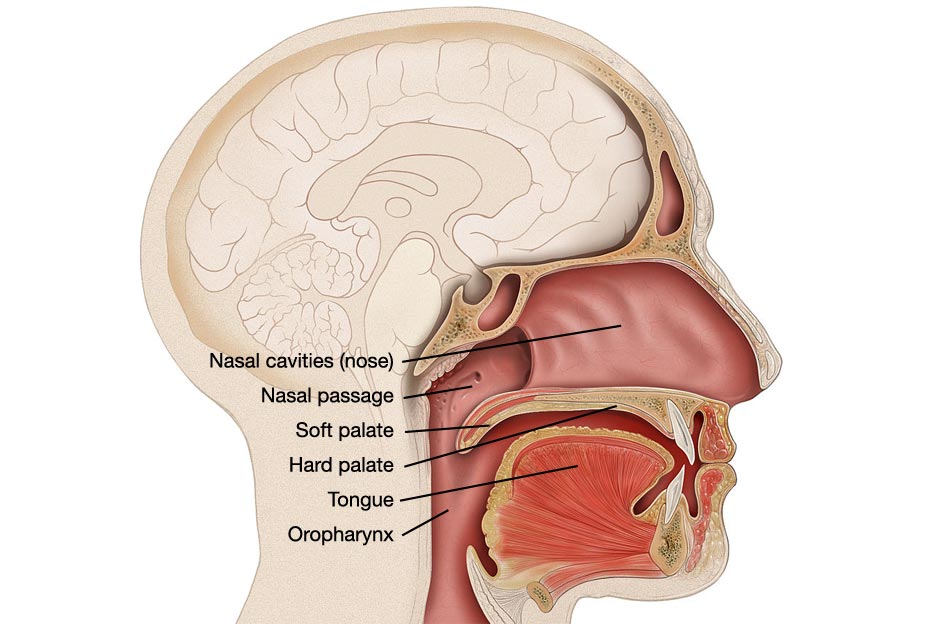
Soft palate
The soft palate is made of muscle fibres and connective tissue, which give it both mobility and support. This part of the palate is very moveable. When elevated for swallowing and sucking, it completely blocks and separates the nasal passages of the pharynx from the mouth and the oral part of the pharynx. While elevated during swallowing, the soft palate creates a vacuum in the oral cavity, which keeps food from entering the nose and the respiratory tract.
During a sneeze, the soft palate elevates, protecting the nasal cavity by throwing most of the excreted substance to the oral cavity instead.
There are five muscles in the soft palate, and they each play an important role for specific functions:
- Tensor veli palatini, which is involved in swallowing.
- Palatoglossus, involved in swallowing.
- Palatopharyngeus, involved in breathing.
- Levator veli palatini, involved in swallowing.
- Musculus uvulae, which moves the uvula.
For speech, the soft palate, when touched by the middle part of the tongue, helps pronounce consonants like “g” and “k”.
Palate anomalies
Palatal abscesses may occur, and their origins would be either teeth, or other neighbouring structures.
Hard palate pigmentation are blue-grey spots on the hard palate, that may be caused by long-term use of the drug chloroquine diphosphatase, used mostly for malaria prophylaxis and rheumatoid arthritis.
Cleft palate is a birth defect described by incompletion of the sealed separation between the nose and mouth. It occurs when the left and the right portions of the palatal plates are not joined, forming a gap between the nasal passage and the mouth. This allows food to enter the nose, and also interferes with speech. This condition can be corrected surgically at a very young age. Cleft palate is often related to another defect called cleft lip.
Palate cancer are tumours that usually begin in the soft palate, and is considered a type of throat cancer. Like most other cancers of the mouth, tobacco and alcohol use are risk factors. When treatable, doctors manage soft palate cancer with a combination of surgery, radiation therapy and chemotherapy.
References
- Mahdi A. Shkoukani, Michael Chen, and Angela Vong. (Cleft Lip – A Comprehensive Review). Front Pediatr. 2013; 1: 53.
- National Institute of Dental and Craniofacial Research, (Cleft Lip & Palate).
- Mayo Clinic, (Soft palate cancer).
- Cedars Sinai, (Palate Cancer).
- Teach Me Anatomy, (The Palate).
- Photo adapted from Patrick J. Lynch, medical illustrator.
The information above should be used as a reference only. Any medical decision should not be taken before consulting a health care professional.

